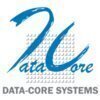Filter interviews by
Raja Software Labs Interview Questions and Answers
40 Interview questions
Find the 2nd smallest number in an array of integers.
Sort the array in ascending order
Return the second element in the sorted array
Find the second maximum number in an array of strings.
Convert the array of strings to an array of integers.
Sort the array in descending order.
Return the second element in the sorted array.
To find the nearest prime number, iterate from the given number in both directions until a prime number is found.
Start iterating from the given number in both directions to find the nearest prime number.
Check if a number is prime by dividing it by all numbers less than its square root.
Keep track of the closest prime number found during the iteration.
Maximize profit by buying and selling stocks with at most k transactions.
Use dynamic programming to track profits for each transaction.
Maintain an array to store maximum profit for each day.
Example: For prices [3,2,6,5,0,3] and k=2, max profit is 7.
Consider edge cases like k=0 or prices being empty.
Check if a given year is a leap year or not.
A leap year is divisible by 4, but not by 100 unless it is also divisible by 400
For example, 2000 is a leap year because it is divisible by 400, while 1900 is not because it is divisible by 100 but not by 400
Find minimum number of coins to make a given value using dynamic programming.
Use dynamic programming to find the minimum number of coins needed.
Create a dp array to store the minimum number of coins for each value up to the given value.
Iterate through each coin denomination and update the dp array accordingly.
Return the value at the given value index in the dp array.
Find the first non-repeating character in a string.
Create a hash table to store the frequency of each character in the string.
Iterate through the string and update the frequency in the hash table.
Iterate through the string again and return the first character with a frequency of 1.
Generate an upside down triangle pattern using asterisks in a specified number of rows.
Start with the maximum number of stars in the first row.
Decrease the number of stars by one for each subsequent row.
Use nested loops: outer loop for rows, inner loop for stars.
Example for 5 rows: ***** **** *** ** *
Find the maximum span of 1 in a 0,1 array.
Iterate through the array and keep track of the first and last occurrence of 1.
Calculate the difference between the last and first occurrence of 1.
Repeat the process for all 1's in the array and return the maximum difference.
Sort a binary array using one traversal and no extra space.
Use two pointers, one starting from the beginning and one from the end of the array.
Swap the elements if the left pointer points to 1 and the right pointer points to 0.
Continue traversing until the pointers meet in the middle.
Raja Software Labs Interview Experiences
43 interviews found
Code Snept question with 3-4 Reasoning question. Google form
Pen paper coding round. String , Array . Linkedlist , graph, questions
(3 Questions)
- Q1. Maximum Spaning
- Q2. Nearest Prime number
- Ans.
To find the nearest prime number, iterate from the given number in both directions until a prime number is found.
Start iterating from the given number in both directions to find the nearest prime number.
Check if a number is prime by dividing it by all numbers less than its square root.
Keep track of the closest prime number found during the iteration.
- Q3. Second Maximum Number in Array
- Ans.
Find the second maximum number in an array of strings.
Convert the array of strings to an array of integers.
Sort the array in descending order.
Return the second element in the sorted array.
(4 Questions)
- Q1. Project Question
- Q2. Robot question of DSA
- Q3. Stock Buy and sell - VI . Leetcode Hard
- Ans.
Maximize profit by buying and selling stocks with at most k transactions.
Use dynamic programming to track profits for each transaction.
Maintain an array to store maximum profit for each day.
Example: For prices [3,2,6,5,0,3] and k=2, max profit is 7.
Consider edge cases like k=0 or prices being empty.
- Q4. Leetcode Medium
Skills evaluated in this interview
I applied via Recruitment Consulltant and was interviewed in Oct 2024. There were 2 interview rounds.
Programming questions on string, array, numbers.
Difficultity level was simple.
5 questions were asked out of which 2 of them were easy and rest of them were hard.
Easy :- sorting, numbers
Hard :- bitwise, mathematical equation question.
I applied via Campus Placement
Three were basic questions around strings and arrays
(1 Question)
- Q1. Detailed discussion on data structures and algorithms
MCQ based on c++ and java
Solve 5 DSA questions
(3 Questions)
- Q1. 1. Buy and sell stocks 2. String balance 3. Storing algo
- Q2. String balance questions and String manipulation
- Q3. Sorting algorithms and their implementations
- Ans.
Sorting algorithms are used to arrange elements in a specific order.
Common sorting algorithms include bubble sort, selection sort, insertion sort, merge sort, quick sort, and heap sort.
Each sorting algorithm has its own time complexity and space complexity.
Sorting algorithms can be implemented in various programming languages such as C++, Java, Python, etc.
Skills evaluated in this interview
I applied via Campus Placement and was interviewed in Jun 2024. There were 2 interview rounds.
Coding test is the first round and if it is cleared you will be interviewed
(1 Question)
- Q1. Find if the given year is a leap year or not.
- Ans.
Check if a given year is a leap year or not.
A leap year is divisible by 4, but not by 100 unless it is also divisible by 400
For example, 2000 is a leap year because it is divisible by 400, while 1900 is not because it is divisible by 100 but not by 400
Interview Preparation Tips
- DSA
Skills evaluated in this interview
DSA questions such as Map, linked list
I applied via Campus Placement and was interviewed in Jul 2024. There were 3 interview rounds.
Consisted of aptitude and coding output questions
Coding test was given with three questions .we have to write in on word in 45 mins
(1 Question)
- Q1. They asked puzzles and other usual questions
Medium level question based on quantitative aptitude
Medium level leetcode questions
Interview Preparation Tips
I applied via Campus Placement
Good question with nice logic
5 question in 1 hour so it's kinda difficult to manage time
Questions based on data structure
Questions based on Data structure
Top trending discussions






Raja Software Labs Interview FAQs
Some of the top questions asked at the Raja Software Labs interview -
The duration of Raja Software Labs interview process can vary, but typically it takes about less than 2 weeks to complete.
Tell us how to improve this page.
Raja Software Labs Interviews By Designations
- Raja Software Labs Software Engineer Interview Questions
- Raja Software Labs Software Developer Interview Questions
- Raja Software Labs Developer Interview Questions
- Raja Software Labs Software Engineer Trainee Interview Questions
- Raja Software Labs Software Development Engineer Interview Questions
- Raja Software Labs Java Developer Interview Questions
- Raja Software Labs Billing Executive Interview Questions
- Raja Software Labs Android Developer Interview Questions
- Show more
Interview Questions for Popular Designations
- Software Engineer Interview Questions
- Software Developer Interview Questions
- Executive Interview Questions
- Analyst Interview Questions
- Business Analyst Interview Questions
- Senior Engineer Interview Questions
- Sales Executive Interview Questions
- Graduate Engineer Trainee (Get) Interview Questions
- Show more
Overall Interview Experience Rating
based on 27 interview experiences
Difficulty level
Duration
Interview Questions from Similar Companies
Raja Software Labs Reviews and Ratings
based on 104 reviews
Rating in categories
|
Software Engineer
269
salaries
| ₹6.9 L/yr - ₹14.7 L/yr |
|
Software Developer
66
salaries
| ₹4.5 L/yr - ₹12 L/yr |
|
IOS Developer
55
salaries
| ₹6.2 L/yr - ₹12 L/yr |
|
Senior Software Engineer
20
salaries
| ₹8.2 L/yr - ₹26 L/yr |
|
Android Developer
19
salaries
| ₹6 L/yr - ₹18 L/yr |

Saama Technologies

Jumio

DISYS

Data-Core Systems
- Home >
- Interviews >
- Raja Software Labs Interview Questions















